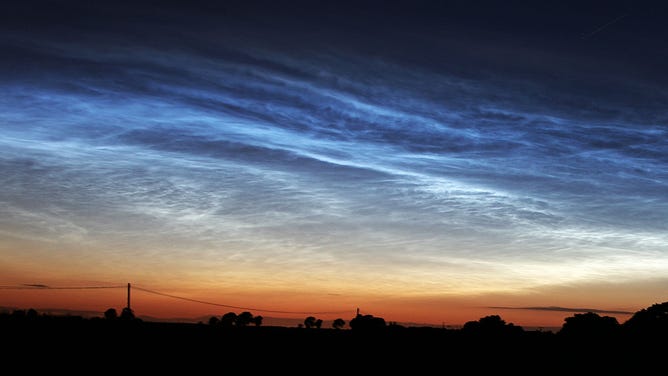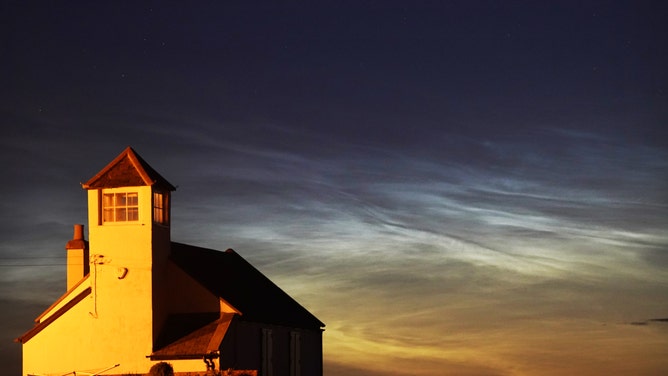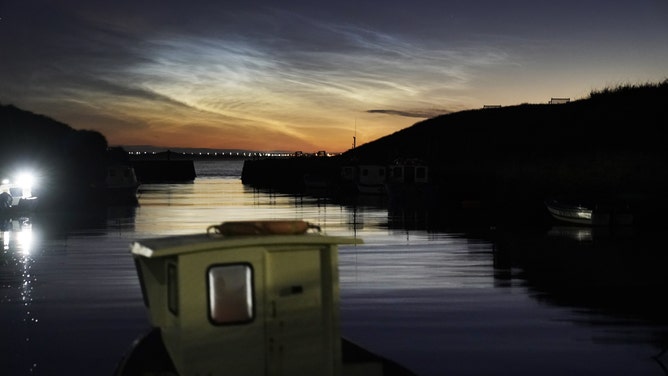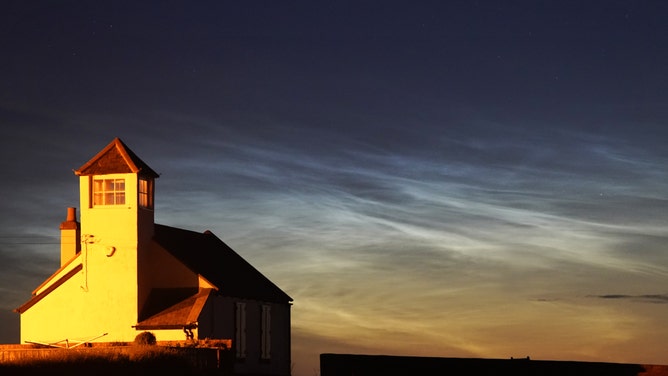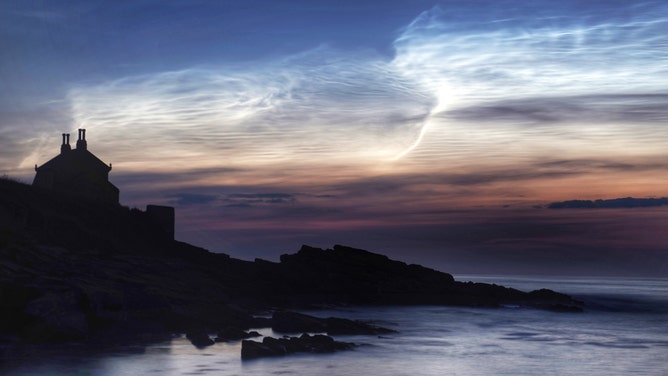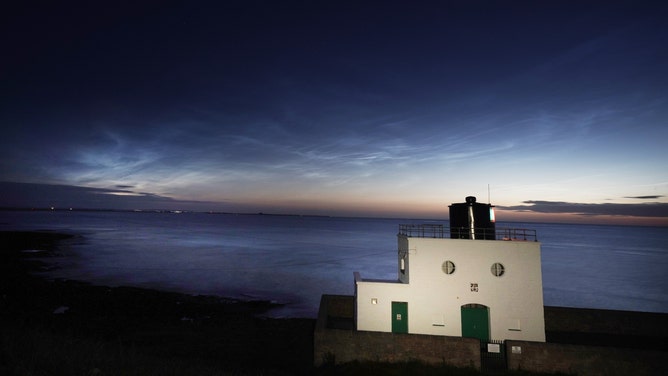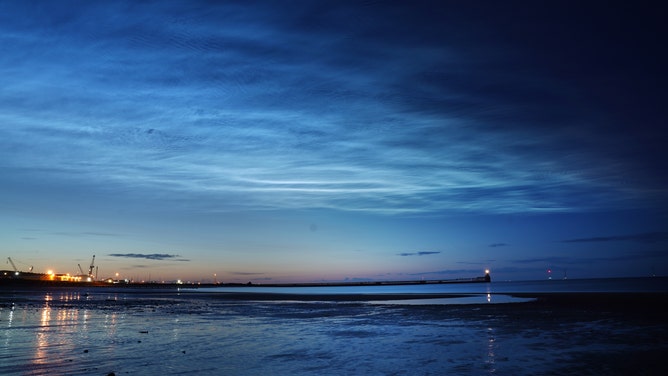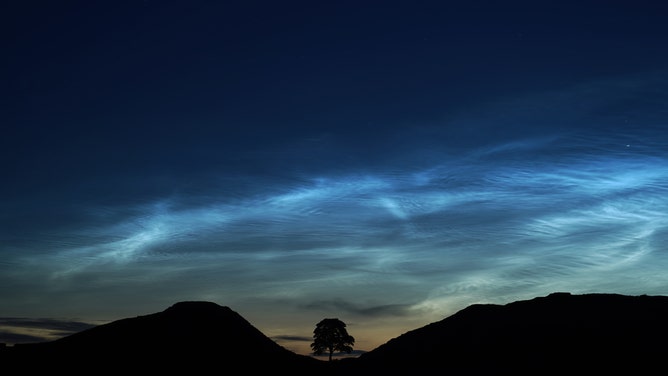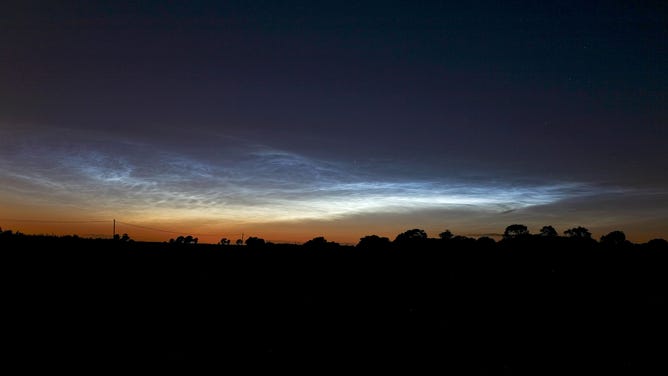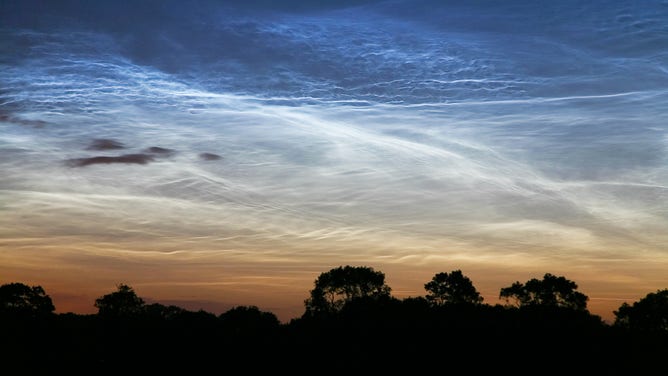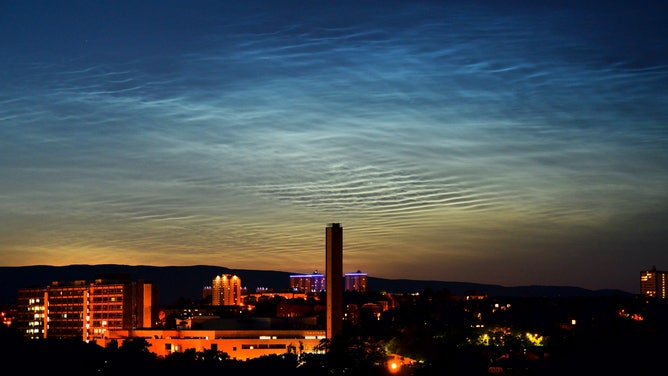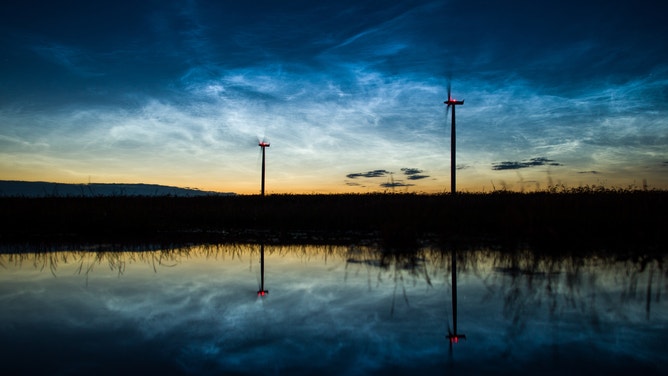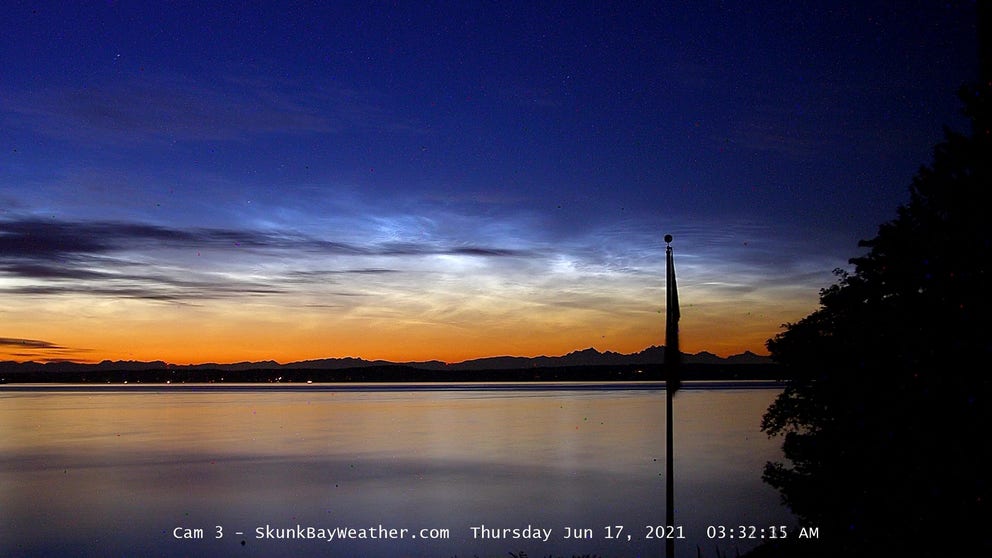How meteor smoke can turn into a dazzling display of glowing clouds at dusk
If you’ve ever been up early for the sunrise or stayed up late past sunset around the heart of summer, you might just be treated to a stunning display of bluish clouds that appear to have luminescence.
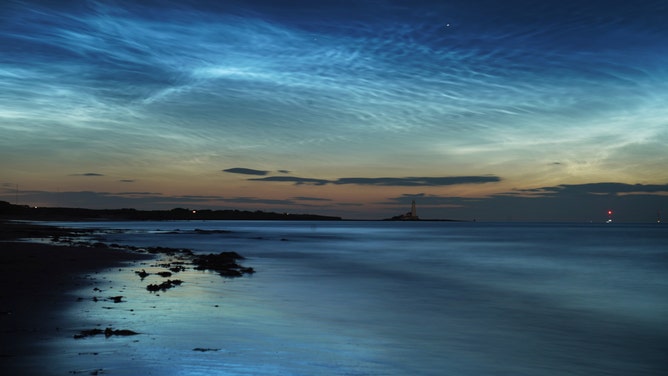
Rare noctilucent clouds shine brightly across Whitley Bay beach over St Mary's Lighthouse on the North East coast overnight, as heavy rain is predicted to lash parts of the UK again as flood-hit communities continue to clear up after last week's downpours. (Photo by Owen Humphreys/PA Images via Getty Images)
If you’ve ever been up early for the sunrise or stayed up late past sunset around the heart of summer, you might just be treated to a stunning display of bluish clouds that appear to have luminescence.
These "Polar Mesospheric Clouds" — informally known as noctilucent clouds, or "night-shining" clouds, glow with a beautiful blue hue as the sun sits just below the horizon. But they are not the typical ones that portend rain; instead, they are in the highest reaches of the atmosphere.
"PMCs are water-ice clouds that form about 50 miles above the surface of the Earth, primarily in the summer hemisphere polar region," says Prof. Cora Randall at the University of Colorado. She is also the principal investigator of the NASA Aeronomy of Ice in the Mesosphere Cloud Imaging and Particle Size instrument.
Like regular clouds, they are formed from condensed water vapor, but instead of dust or other Earth-born particles, these clouds coalesce around leftover meteor smoke! The resulting ice particles are just 50 nanometers in size — that is 0.000002 inches across.
But for this to happen, temperatures have to be quite cold — at least -190 degrees F, Randall said. Those temperatures can be found near the poles, some 50 miles high in the mesopause area of our atmosphere.
"Which is why they somewhat ironically form in the summer," she said. "The polar mesopause in summer is the coldest region on Earth, even colder than the winter polar mesopause."
These clouds form over the poles but spread south. They can appear at night in summer but are best seen in the 30-60 minutes just before sunrise or after sunset. June and July are the best months to see them.
They used to be rare sightings and relegated to far northern latitudes. But in recent years, it appears sightings are becoming more frequent and farther south. In recent years, those as far south as Los Angeles and Las Vegas have spotted them.
Why?
"The short answer is that we are still investigating this," Randall said. Aside from the meteor smoke, which has remained constant, you need very low temperatures and abundant water vapor at those high altitudes.
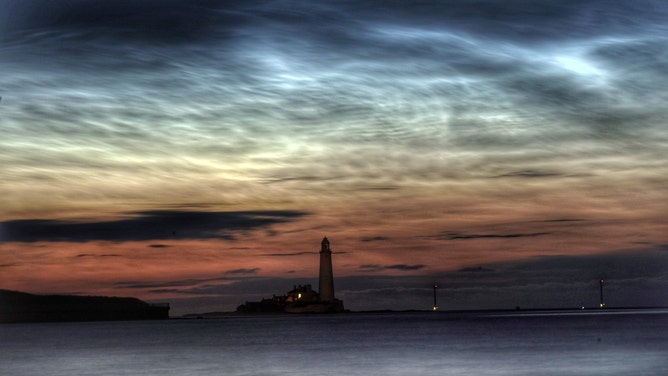
Noctilucent clouds gather over Whitley Bay above St Mary's Lighthouse in the early hours. (Photo by Owen Humphreys/PA Images via Getty Images)
"So if polar mesopause temperatures are decreasing or water vapor is increasing, we would expect more (PMC) clouds to form," Randall said.
Could increased carbon dioxide emissions be a key?
Adding carbon dioxide to the lower atmosphere increases temperatures, but it acts as a radiator at those high levels, which cools the mesosphere, Randall said. In addition, increases in methane — another climate change gas — in the lower atmosphere will increase water vapor amounts in the higher atmosphere.
But so far, the observations have only shown minor changes not deemed to be statistically significant, Randall said, "which is why we still aren’t certain of the answer to (the) question."
Satellites have only recently been monitoring the clouds and data, and there isn’t enough data yet to determine trends, she said.
"Yet even very small changes can have dramatic effects on the clouds," Randall added.
Noctilucent Clouds in Hansville, Wash.
Noctilucent clouds come out in Hansville, Wash. in 2019. (Video courtesy: Greg Johnson / SkunkBayWeather.com)
As for sightings farther south in recent years, Randall says anecdotally, there does appear to be more frequent sightings at lower latitudes of late.
"Whether the increase in mid-latitude sightings is because the clouds have been appearing more frequently at mid-latitudes, or because more people have been engaged in observing them, is a question," Randall said. The clouds are more difficult to observe via satellite and measure at lower latitudes because they are typically dimmer.
"At the moment, it is problematic to quantify trends at the mid-latitudes from the satellites," she said.
Why are the clouds blue? A similar reason to why the sky is blue
Part of the beauty of the display is that the clouds seem to give off a glowing blue color, instead of white or gray like traditional clouds.
"It's because of Rayleigh scattering," Randall said. The ice cloud particles are so tiny that they scatter out the shorter light wavelengths like blue light. Light from the sun well below the horizon will shine through the clouds, with the blue light becoming scattered and that's the light you'll see reflected back to your eyes.
So, next time you’re out and about on a warm summer evening, and the sun has just set, take a peek at the skies and see if you will be treated to the surreal display of clouds born from meteors.
